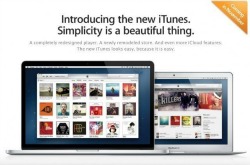
I don’t know about you, but I’m kind of bored with holding up Apple as the paragon of great brands. Time to move on and start talking about other trailblazers.
My love affair with Apple hasn’t exactly hit the skids, but it took a hit following the release of iOS 6 and Apple Maps. It’s not as if Apple hasn’t made mistakes (a few of you may remember Lisa or the Newton), but for the past few years, it seemed like they could do no harm.
Still, surprising as the Maps screw-up was, the benefits of iOS 6 far outweighed this single bug-riddled app in my estimation. What bothered me more were theimplications of the gaffe.
Great new companies take huge risks to make it, relying on vision, charisma and sheer nerve. They don’t do focus groups. Rather, they are naturally intuitive, anticipating consumer needs, wants and emotional states-of-being, knowing in their gut that they’re right about the future.
Then they get successful. Jay Chiat, the late founder of Apple’s ad agency Chiat/Day and an ex-boss of mine, always said, “How big can we get before we get bad?” He understood product life cycles. Almost without exception, companies become self-conscious about risk and start shooting for the creative middle after they’ve made it. And no wonder, as along with growth comes the scrutiny of stockholders and the media. Innovation gives way to the desire to not mess up.
Apple may now be hitting that point of no return where big starts turning bad, where the corporate mindset begins its transition from offense to defense. This shift may have been unthinkable just a few years ago, but it now seems to be underway. Without their founder at the helm, ranting mercilessly at his employees and raving madly that everything Apple must be “insanely great,” we should not be surprised to see more Maps type blunders.
Take yesterday, for example, when I downloaded the latest version of iTunes (11.0) on faith, the way I always do when Apple offers an upgrade. I was shocked to find that my favorite feature, iTunes DJ, was gone. And according to the Apple forums and discussion groups I’ve been visiting, along with the Apple technical adviser I talked to today, I’m not the only one who is shocked and disappointed.
DJ is an amazingly simple feature that creates random playlists of any length you specify from your iTunes music collection. Sure, you can always listen to any of your albums or select songs manually, but iTunes DJ presented way to keep your music experience fresh with very little effort on your part. I always keep five playlists of 25 songs each on my iPod for my daily workouts at the gym or walks around town. When I’ve listened to them all I simply create a new set of five, which is done in a snap.
There are so many things I love about the randomness. My iTunes collection has nearly 8,000 songs that reflect my eclectic tastes. A great quantity and variety of rock & roll, new and old, but lots more. Classical (Bach to Brahms to Stravinsky to Bernsetin), Broadway musicals, jazz, folk, hip hop, standards and more.
When you shake it all up, amazing things can happen. Some songs flow together thematically, others musically, often in unexpected ways. Or the juxtaposition of two or more songs is so striking that you think about all of them differently. The Clash followed by Beethoven? Not so strange. They were both revolutionaries in their own ways. “Magical Mystery Tour” followed by ELO’s “Mr. Blue Sky?” You knew the Beatles were an influence, but wow, that’s Jeff Lynn being upfront about wishing that he were the fifth Beatle.
I spent about an hour today doing research and then calling Apple to restore the old version of iTunes so I could have iTunes DJ back. This marks the first time I have ever moved backwards on any software. Yes, the bloom is off the Apple rose and I have very mixed feelings about that.
It’s sad when a TV show you love goes off the air or your favorite band starts showing signs of staleness. And it’s not uncommon to get a little down when you finally realize that a brand you’ve loved, maybe most of your life, simply isn’t as good as others that have come along. Or maybe it’s become so blatantly unfashionable that you can’t be seen using it, even by yourself.
Since we define ourselves through our brands, our music and our TV shows, a part of us dies when they disappear or we move on from them.
But wallowing in these losses is counterproductive. After all, it’s just stuff. Life not only goes on, it actually gets better. It’s hard for me to imagine my life without my iPhone and MacBook, but 15 years ago it was hard to imagine life without my Toshiba laptop and my Motorola flip phone. I couldn’t imagine what I’d do after Seinfeld went off the air, but now there’s Curb Your Enthusiasm and almost too much other good stuff to watch across a multitude of TV networks and the Internet.
Memories are wonderful but nostalgia is for losers. Things weren’t better in the “old days,” they were just different. We get “stuck” in life because we grow too comfortable. And that’s death for innovation on every level, business and personal.
Yes, I moved backwards for the moment with to iTunes 10.7. A bit of comfort and consolation in the short term won’t hurt. But Apple, I will get over you. Don’t think that I’m not already looking for the next best thing.



